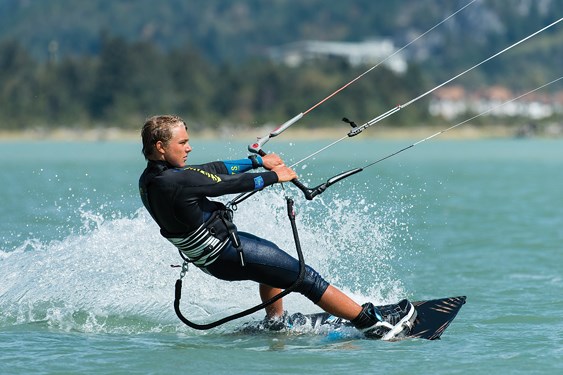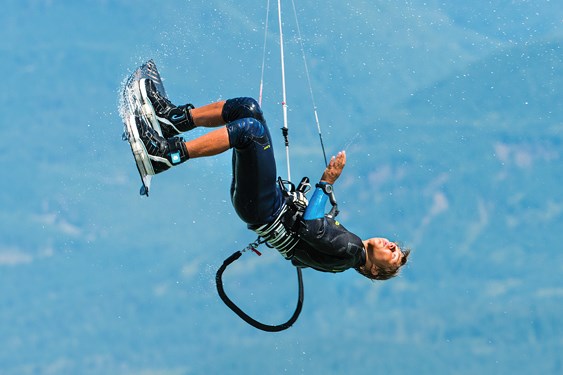West Vancouver’s Jack Rieder dazzled hundreds of spectators at the Kite Clash Championships held in Squamish, Aug. 26-28.
Just 16 years old, Rieder took the competition by storm, winning gold medals in both the Canadian junior freestyle and international junior open competitions. He kept on hitting the podium when he moved up to the senior ranks, adding silver in the Canadian men’s freestyle and men’s kite slalom.
“What placed him ahead of the pack was his consistency,” Kite Clash judge Geoffrey Waterson stated in a press release. “He did well because he didn’t crash and he landed a lot of technical, high level tricks.”
Rieder’s career in Kiteboarding began just two years ago, when at 14 years of age, while sailing in Squamish, he noticed a group of kiteboarders darting in and out of the waves near the beach.
“They were going a whole lot faster and jumping,” Rieder said. “It just looked way more exciting.”
Rieder had to beg his parents for a few months to finally let him take lessons, he said. Two years later, he is one of the top kiters in the country.
Competition at the Kite Clash takes three forms. There is the big air competition, where kiters are judged on the height and style of their jumps. In this category, the wind often carries kiters up to heights of 10-plus metres. The slalom also made its debut this year.
Rieder specializes in the freestyle competition, where kiters remove their safety harnesses so they can pass the bar behind their backs while completing tricks. According to Rieder, because they are not attached to their kites, freestylers stay a lot closer to the water when they jump. It turns out “closer to the water” means something very different to Rieder than it would to most people: the pros frequently reach heights of five to six metres while pulling off their tricks.
In freestyle, your score is based on the difficulty of the trick you attempt, the speed at which you enter the jump, your technical execution of the jump and, of course, how wild the crowd goes when you stick the landing.
“It’s kind of a fun part of it,” said Rieder. “If you’re making the crowd all excited, they’ll boost up your score for that.”
Rieder was shown the ropes by some of Canada’s most experienced kiters. In training, he would try to mimic their styles and prove to them that despite his age, he could still keep up with their level of difficulty, he said.
“When I was learning up in Squamish,” he recalled, “a lot of the guys up there like to do kite loop handle passes, which is a more extreme version of what other juniors were doing (at the competition).”
It is that move that Rieder believes won him the gold medal in both junior competitions. He explained that when you enter the jump if you bring the kite through the centre of the wind it gives a lot more power to the jump.
“The kite goes around in a circle and that brings you up a lot higher,” he said. “Then you do the handle pass.”

He said that by doing this kind of loop before passing the bar behind his back, he was able to reach a height of about four metres during the competition in Squamish.
The site of the competition was familiar to Rieder. During the winter season many local kiters don thick wetsuits with hoods and gloves and go to work in the frigid surf off the shore in Tsawwassen. But as soon as the weather turns to summer, it’s back up to Squamish, where Rieder said you find some of the best kiteboarding conditions in the country.
“That spot’s nice and steady,” he said. “It’s the spot everybody waits for in the summer.”
Now with two national championship appearances under his belt, and some hardware to show for it, Rieder will have to make a decision about how far he wants to go with the sport.
“Kiteboarding doesn’t have a lot of money in it right now,” said Rieder. “But it’s growing pretty quickly.”
The sport will never garner the kind of payday that professional hockey and soccer players receive, said Rieder, but he is viewing it as an opportunity to see the world and make a little money in the process.



